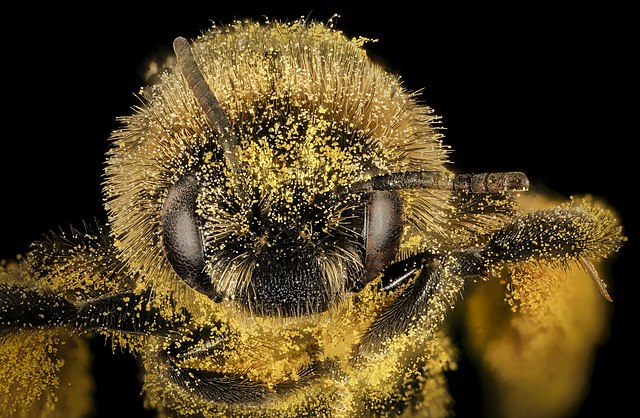Anemophily or wind pollination is a form of pollination whereby pollen is distributed by wind. Almost all gymnosperms are anemophilous, as are many plants in the order Poales, including grasses, sedges, and rushes. Other common anemophilous plants are oaks, pecans, pistachios, sweet chestnuts, alders and members of the family Juglandaceae. Approximately 12% of plants across the globe are pollinated by anemophily, including cereal crops like rice and corn and other prominent crop plants like wheat, rye, barley, and oats. In addition, many pines, spruces, and firs are wind-pollinated.
The flowers of wind-pollinated flowering plants, such as this saw-tooth oak (Quercus acutissima), are less showy than insect-pollinated flowers.
Anemophilous plants, such as this pine (Pinus) produce large quantities of pollen, which is carried on the wind.
A pine with male flowers releasing pollen into the wind
Pollination is the transfer of pollen from an anther of a plant to the stigma of a plant, later enabling fertilisation and the production of seeds. Pollinating agents can be animals such as insects, for example beetles or butterflies; birds, and bats; water; wind; and even plants themselves. Pollinating animals travel from plant to plant carrying pollen on their bodies in a vital interaction that allows the transfer of genetic material critical to the reproductive system of most flowering plants. When self-pollination occurs within a closed flower. Pollination often occurs within a species. When pollination occurs between species, it can produce hybrid offspring in nature and in plant breeding work.
Female carpenter bee with pollen collected from a night-blooming cereus
Hummingbirds typically feed on red flowers
A bee (Mellisodes desponsus) covered in pollen
Hind leg of a honey bee with pollen pellet stuck on the pollen basket or corbicula. When the worker bee is collecting pollen, their legs make the transfer of pollen from the inner basitarsal combs to the outer pollen basket (shown in figure).







